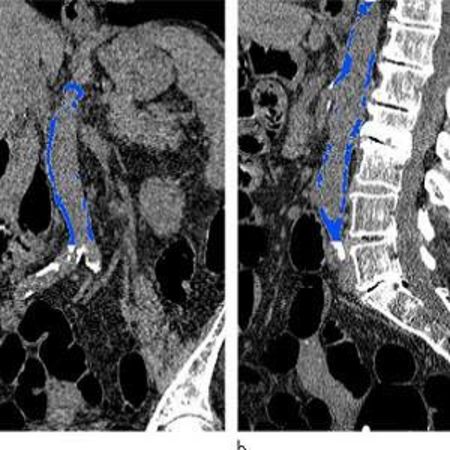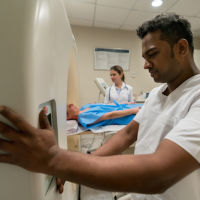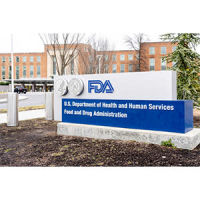Computed tomography (CT) is commonly used to measure calcium, a component of plaque, in the coronary arteries. CT can also measure calcium in the abdominal aorta, the large vessel that carries oxygenated blood to the lower extremities.
New research published in the journal Radiology finds that CT-based measures of calcification in the abdominal aorta are strong predictors of heart attacks and other adverse cardiovascular events. Indeed, the findings show that CT calcification assessment is even better than the Framingham risk score, a widely used prediction model for cardiovascular disease based on traditional risk factors like age, cholesterol and blood pressure.
The abdominal aorta can be seen on abdominal imaging exams like CT colonography, also known as virtual colonoscopy, and in the diagnostic workup for acute cholecystitis, an inflammation of the gallbladder often caused by gallstones.
For this new research, investigators examined the relationship between abdominal aortic calcification on CT and cardiovascular events in 829 asymptomatic patients with a mean age of approximately 58 years. The patients had undergone nonenhanced screening CT colonography between April 2004 and March 2005. The investigators were able to follow the patients for an average of 11 years to see if they had developed adverse cardiovascular events like heart attack, stroke, death or congestive heart failure.
Of the 829 patients, 156 (18.8 percent) had a major cardiovascular event. The events occurred almost seven years after CT, on average, and included heart attack in 39 and death in 79. CT-based abdominal aortic calcification was a strong predictor of future cardiovascular events, outperforming the Framingham risk score. Abdominal aortic calcification was more than five times higher, on average, among those who had a cardiovascular event than those who didn't.
The findings point to the potential of abdominal aortic calcification assessment as an opportunistic screening tool – something that could be added to other exams without the need for additional patient time or radiation dose. Patients could be assigned to preventive treatment regimens based on their cardiovascular risk categories.
Study lead author Stacy D. O'Connor, MD, MPH, explains: "There are thousands of CT scans performed every day across the United States, so this gives us an opportunity to reach a lot of people. For instance, if someone is getting a scan for cholecystitis and we see abdominal aortic calcification on the CT, we can address things like blood pressure and cholesterol with the patient."
Dr. O'Connor's team plans to build on their results by studying larger groups of patients. They also intend to move towards a fully-automated protocol for more widespread implementation of the assessment.
"It's our hope that these opportunistic measures can be added to reports for patients undergoing routine abdominal CT, regardless of the imaging indication," Dr. O'Connor says.
Image Credit: Radiological Society of North America
Latest Articles
computed tomography, CT-based abdominal aortic calcification, abdominal aorta
Computed tomography (CT) is commonly used to measure calcium, a component of plaque, in the coronary arteries. CT can also measure calcium in the abdominal aorta, the large vessel that carries oxygenated blood to the lower extremities.



























